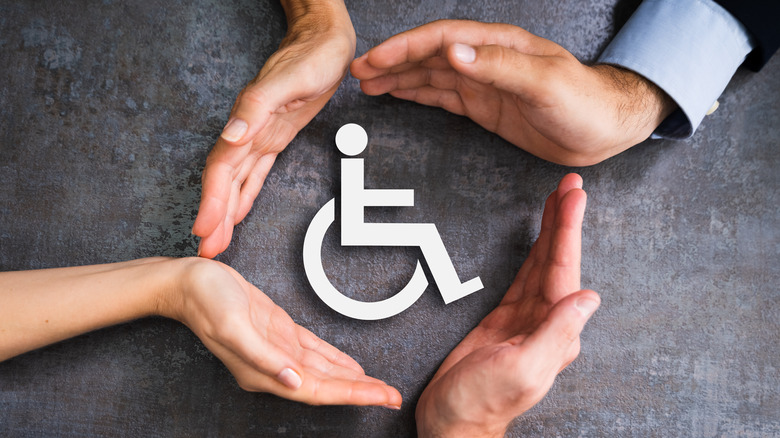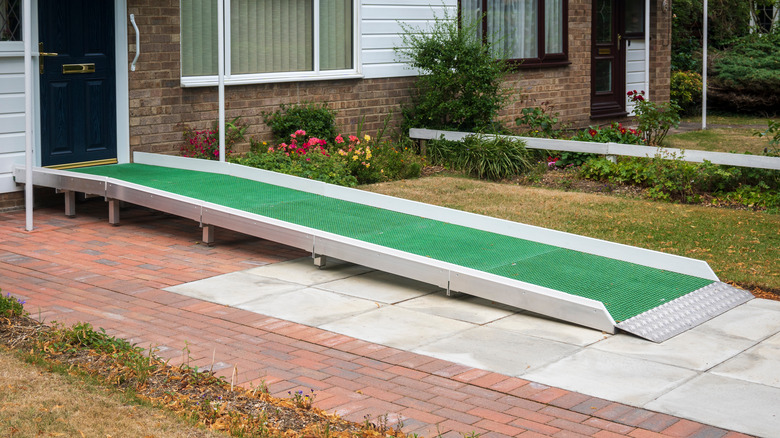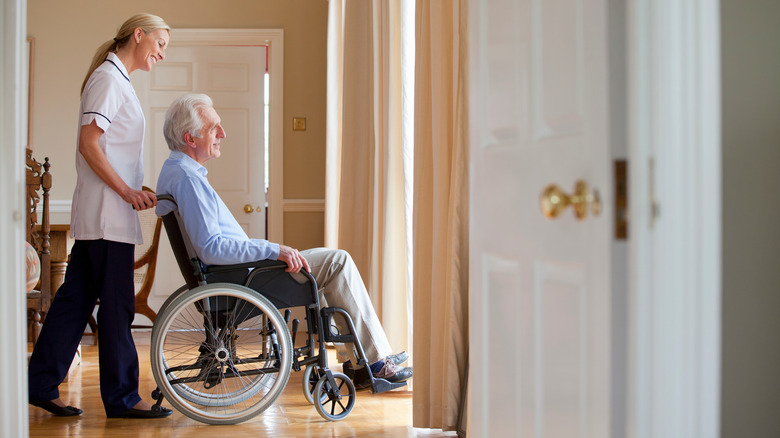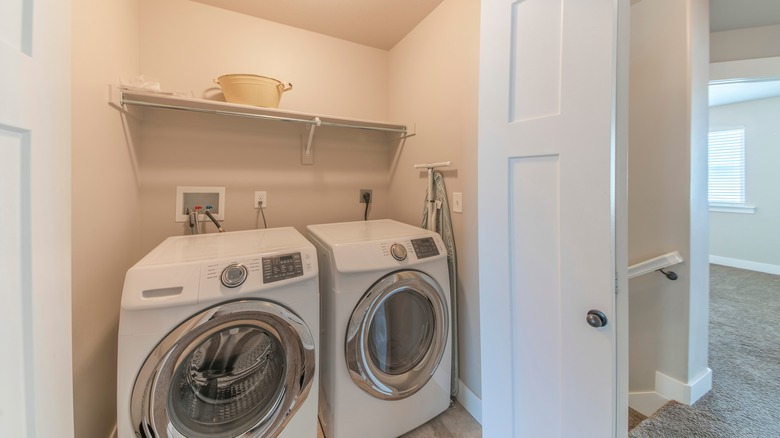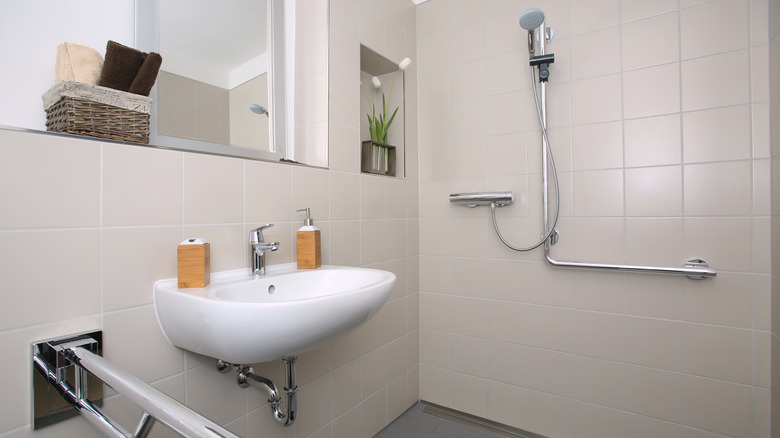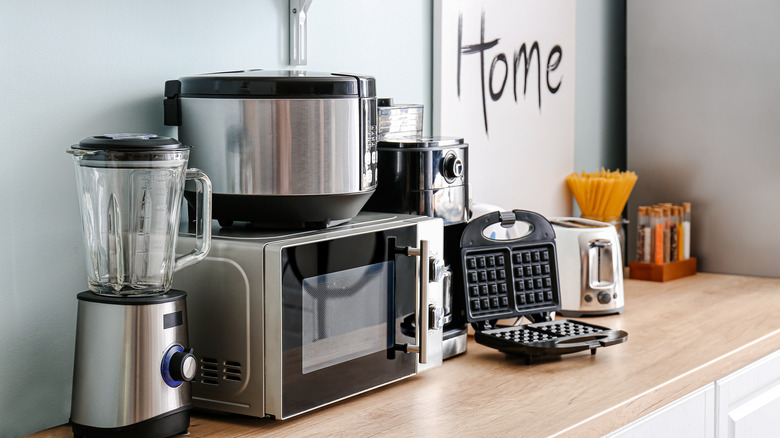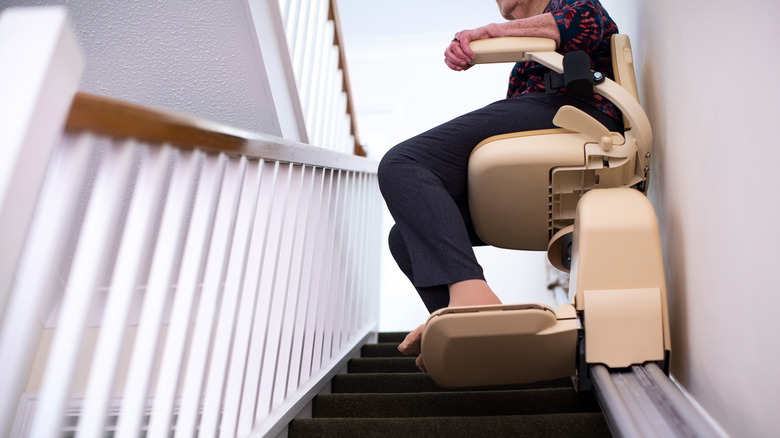Easy Ways To Increase The Accessibility Of Your Home For People With Disabilities
If you aren't faced with a disability, chances are you haven't given accessibility much thought, especially when it comes to your home. Going up and down the stairs or reaching the upper cabinets may not be a challenge for you; however, according to Mobility Magazine, 61 million people in the United States have a disability, and a majority of the 26% reside in the South. This means one in four people in the U.S. require special features or modifications to increase accessibility in the home, and unfortunately, not every home is equipped with these features.
While your home may not already be accessible to people with disabilities, don't panic — upgrading your home to accommodate people with disabilities is completely doable. There are several modifications to increase a home's accessibility, and we've compiled a list of easy ways to do it.
Ramps
Accessibility starts with the outside of your home. If your front door is only accessible via stairs, it's a good idea to look into installing a ramp. BraunAbility states all ramps should be at least 36 inches wide, but some states require a higher minimum. The ramp cannot be longer than 30 feet without a rest platform. This prevents the person from getting fatigued on the way up the ramp. Additionally, all ramps are required to have handrails on either side.
Large entryways
One of the key ways to increase accessibility in your home is by widening all doorways and entryways, both inside and outside the home. According to TruStile, the American Disability Act (ADA) mandates a door opening of no less than 32 inches wide, while the height of a door opening must reach a minimum of 80 inches. The ADA also states that thresholds for exterior sliding doors must not exceed the ¾-inch height limit, while other door types have a height maximum of ½-inch.
Easy-to-access doors
It seems obvious — having accessible doors in your home for people with disabilities, but have you considered all doors? Of course, the front door, bedroom doors, and the door to the bathroom are important, but you can't forget about the closet, pantry, and cabinets. The United Disabilities Services Foundation recommends lower cabinets without doors, and closets and pantries should use bi-fold or sliding doors for easy access. All interior doors should open using no more than five pounds of effort, and handles must be mounted 36 inches off the ground.
Bathroom upgrades
According to Convenient Height, most injuries take place in the bathroom. A majority occur while sitting down and getting up from the toilet, and one-third happen in the shower. To avoid toilet injuries, the American Disabilities Act's guidance for accessible design requires a 17- to 19-inch distance from the top of the seat to the floor for adults and 11 to 17 inches for children. Additionally, all toilets must include a grab bar. To prevent shower injuries, ADA Solutions suggests roll-in showers for wheelchairs and transfer-type showers for those who are able to walk but need to sit down during their shower.
Reachable appliances
Art of Drawers explains that while it isn't required by law to make kitchen appliances accessible for people with disabilities, it's still a common courtesy. To ensure accessibility, countertops should be no higher than 34 inches off the ground. If your household uses heavy appliances, such as microwaves, air fryers, and crockpots, keep them out on the counter at all times for easy access. If you start to run out of room, give yourself more counter space by cutting a butcher block to fit over your sink.
Stair lift
If your home has multiple levels, Lifeway Mobility suggests installing a stair lift so people with disabilities can access each floor. Keep in mind that chair lifts and stair lifts are not the same. According to Williams Lift Co., a stair lift is a seat that helps someone ride up the stairs, while a chair lift is a platform that is designed specifically for transferring wheelchairs. Unlike the stair lift, a chair lift only travels up one level.
